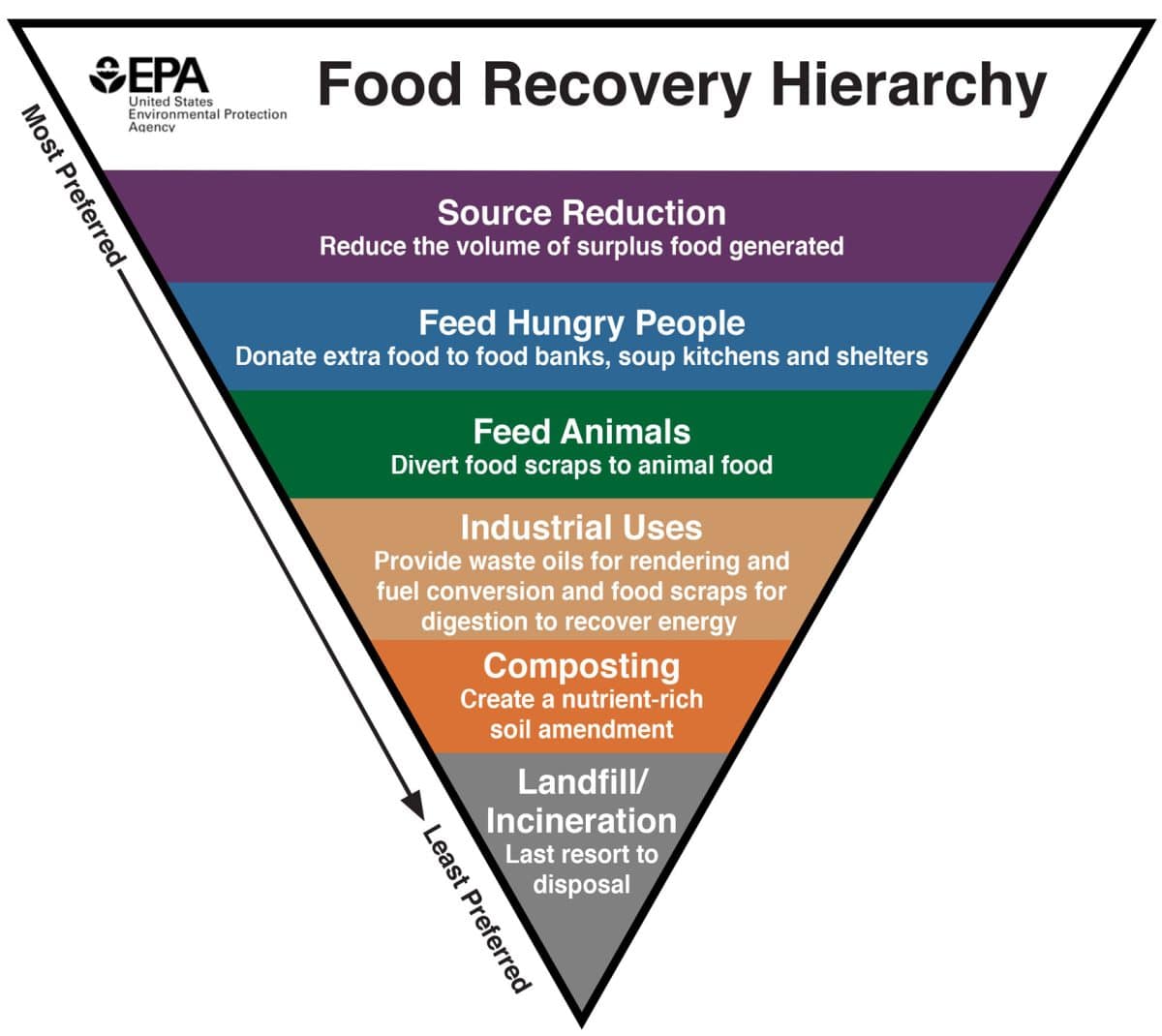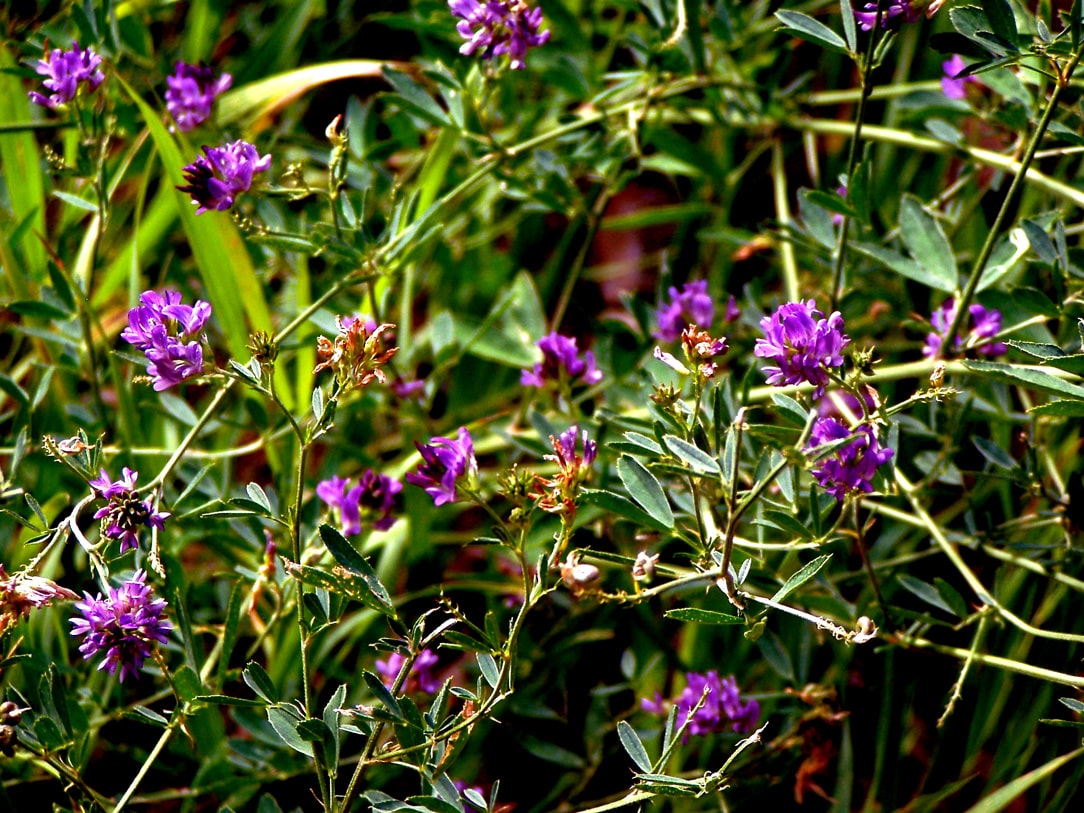 Food recovery hierarchy chart. Courtesy/Zero Waste Team
Food recovery hierarchy chart. Courtesy/Zero Waste Team
Zero Waste Team News:
There is No Waste in Nature ... a message from the Los Alamos County *Zero Waste Team.
Zero Waste Tip:
Back to Nature aka Kitchen to Compost
SEND US TO COMPOST – Uneaten fruits & vegetables, eggshells, grass clippings, leaves, shredded paper products, and wood shavings.
LEAVE US OUT OF COMPOST – Meat, fish, bones, fat, oil, milk, cheese, dairy products, bread, rice, pasta, baked goods, and pet waste.
There is no waste in nature. Natural ecosystems operate efficiently in cycles. What isn’t eaten or what is excreted is decomposed and goes to enrich soil. Nature does its own composting. Nature has its own cleanup crew. Vultures sail the skies searching with eyes and sense of smell for a meal down below.
Down below there are other members of the crew that are rarely seen. The Soil Food Web creates an alive soil. There are specialists in this field of decomposing. The arthropods of different sizes are the shredders and grazers. Nematodes are predators who together with bacteria and fungi, and protozoa) contribute to the eventual break down of organic material. Worms have dual responsibilities. They aerate the soil, and their castings enrich the soil.
Plants are our allies in our challenges with climate disruption. The Alfalfa, Medicago sativa, is an Asian native that has gone around the world. The Arab nations consider it the “Father of all foods”. We are fortunate it migrated to our shores. Its long roots often reach down 25 feet deep into the earth. They act like a siphon, providing a channel into the earth for water, so it can feed, nurture, and add to aquifers and not become “run off”. Its nutrition content makes it both a tonic and a nutritive herb. Tonic herbs improve the assimilation of nutrients. Nutritive herbs increase bioavailability in forms easy for the body to uptake. When plowed under before it has a chance to seed, its spread can be controlled, and its foliage becomes green manure. When combined with other plants it makes a natural fertilizer.
 Alfalfa plant. Photo by Jessie Emersen
Alfalfa plant. Photo by Jessie Emersen
This recipe for natural fertilizer can be used for both outdoor and indoor plants:
- Fill a gallon jug with 1 oz. each of Alfalfa, Nettles, Comfrey root, Kelp;
- Then, fill the gallon jug with water;
- Steep for 24 to 48 hours;
- Finally, add the natural fertilizer to your compost.
- There is no waste.
Biomimicry is a practice that learns from and mimics the strategies found in nature to solve human design and climate challenges. It produces sustainability and solidarity with all of life. Check out this website, Asknature.org. So, how does biomimicry relate to Zero Waste and food waste? The old way is to use different fungicides to combat disease and food loss. However, fungicides, herbicides and pesticides have been proven to harm both environmental and human health. Fungi are smart like bacteria and viruses. They develop resistance to the synthetic fungicides. To combat this, scientists went to nature for the answer. There are now 10 top companies that produce natural fungicides. Plant chemicals are captured and placed into a biological container. They remain intact on the plant until that plant or a nearby plant senses danger and its surface becomes acidic. The capsule reacts to the change in pH and breaks open and releases compounds that will kill the fungi. No poison residue. No waste.
Human caused climate change is driven by waste. The waste products of burning fossil fuels are the gases that are trapping heat and causing Earth to heat up. Methane from organic waste in landfills combines with natural gas waste, methane, to create a chemical 20 times more potent than CO2.
Food is the single largest producer of organic waste to US landfills. In 2021, the EPA reported 70 billion pounds of food waste went to landfills. The EPA developed a Food Recovery Hierarchy. Each tier of the inverted pyramid focuses on different management strategies for wasted food. If adopted, the food waste program and compost initiative that have been presented to the County Council will help our country achieve its national goal to reduce its food waste by 50 percent by 2030. To achieve this, we must invest in the infrastructure to rescue, recycle and, prevent organic waste from entering landfills. When we begin county composting, something many people want to see happen, we will be on our way to meeting that goal, achieve zero waste and feed the hungry.
For more information, check out the Los Alamos County Environmental Services webpage at www.losalamosnm.us/gogreen. For those with questions or concerns, contact Environmental Services at 505.662.8163 or solidwaste@lacnm.us
* Zero Waste Team: The Environmental Sustainability Board (ESB) and Environmental Services Division (ESD) formed the Zero Waste Team to educate the community on:
- reducing waste and greenhouse gas emissions, and
- conserving energy and water.
Comprising community volunteers and Los Alamos County employees, the team achieves the ESB and ESD charge through printed and digital messaging that is shared through traditional media sites, social media, and brochures. Moreover, the Zero Waste team members work with individuals and organizations, such as restaurant owners, businesses, schools, and residents, to incorporate these best practices to reduce and conserve into daily routines. To join or contact the Zero Waste team, contact ZeroWaste@lacnm.us.

